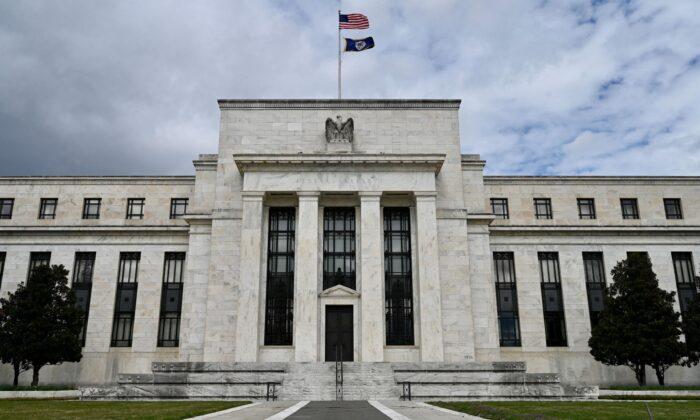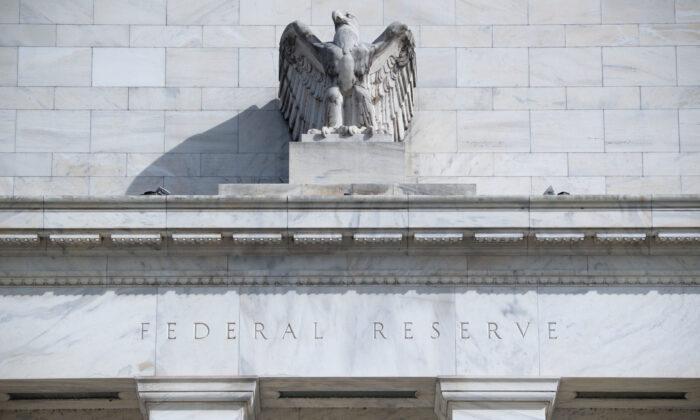The Federal Reserve’s next crisis is already brewing. Unlike 2008, where subprime mortgages froze counter-party trading in the credit markets as Lehman Brothers failed, in 2022, it might just be the $27 trillion Treasury market.
When historians review 2022, many will remember it as a year when nothing worked. Such is far different than what people thought would be the case.
Throughout the year, surging interest rates, the Russian invasion of Ukraine, soaring energy costs, inflation running at the highest levels in 40 years, and the extraction of liquidity from stocks and bonds whipsawed markets violently. Since 1980, bonds have been the de facto hedge against risk. However, in 2022, bonds have suffered the worst drawdown in more than 100 years, with a 60/40 stock and bond portfolio returning a despairing -34.4 percent.
The drawdown in bonds is the most important. The credit market is the “lifeblood” of the economy. Today, more than ever, the functioning of the economy requires ever-increasing levels of debt. From corporations issuing debt for stock buybacks to operations to consumers leveraging up to sustain their standard of living. The federal government requires continuing debt issuance to fund spending programs because it requires the entirety of tax revenue to pay for social welfare and interest on the debt.

For a better perspective, it currently requires more than $70 trillion in debt to sustain the economy. Before 1982, the economy grew faster than the debt.

A Lack of a Marginal Buyer
The problem comes when interest rates rise. Higher rates reduce the number of willing borrowers, and debt buyers balk at falling prices. The latter is the most important. When debt buyers evaporate, the ability to issue debt to fund spending becomes increasingly problematic. Such was a recent point made by Treasury Secretary Janet Yellen.“We are worried about a loss of adequate liquidity in the [bond] market,” she said.
The problem is that outstanding Treasury debt has expanded by $7 trillion since 2019. However, at the same time, the major financial institutions that act as the primary dealers are unwilling to serve as the net buyers. One of the primary reasons for this is that for the past decade, the banks and brokerages had a willing buyer to which they could offload Treasurys: the Federal Reserve.

Such isn’t the first time this has happened. Each time the Federal Reserve previously hiked rates, tried to stop quantitative easing, or both, a crisis event occurred. Such required an immediate response by the Federal Reserve to provide an accommodative policy.

It’s Not a Problem Until Something Breaks
As discussed previously, while there are actual warning signs of fragility in the financial markets, they are not enough to force the Federal Reserve to change monetary policy. The Fed noted as much in the minutes of its recent meeting.“Several participants noted that, particularly in the current highly uncertain global economic and financial environment, it would be important to calibrate the pace of further policy tightening with the aim of mitigating the risk of significant adverse effects on the economic outlook.”
While the Fed is aware of the risk, history suggests the crisis levels necessary for a monetary policy change remain in the distance.

Unfortunately, history is riddled with monetary policy mistakes where the Federal Reserve over-tightened. As the markets rebel against quantitative tightening, the Fed will eventually acquiesce to the selling deluge. The destruction of the “wealth effect” threatens the functioning of both equity and credit markets. As I will address in an upcoming article, we already see the early cracks in both the currency and Treasury bond markets. However, volatility is rising to levels where previous events occurred.

“What should be most concerning to the Fed and the Treasury Department is deteriorating demand at U.S. debt auctions. A key measure called the bid-to-cover ratio at the government’s offering Wednesday of $32 billion in benchmark 10-year notes was more than one standard deviation below the average for the last year,” reported Bloomberg News.
When the lag effect of monetary policy collides with accelerating economic weakness, the Fed will realize its mistake.
A crisis in the Treasury market is likely much greater than the Fed realizes.




